
Sarah Race, Photographer and Filmmaker
Sarah Race is a photographer originally from a small-town in Oregon. She has been in Vancouver since 2004. Sarah completed the Documentary Film Program at InFocus Film School (formerly Pull Focus Film School) in 2015.
Her documentary Barbarian Press will have its world premiere at the Toronto Hoc Docs Festival 2016 on May 4, 5 and 8. Hot Docs is a renowned Canadian International Documentary Festival, held April 28-May 8 2016.
The film will also be screening at DOXA Documentary Film Festival in Vancouver on May 7 and 12.
About Barbarian Press, and Jan and Crispin Elsted
Jan and Crispin Elsted produce awe-inspiring books of beauty using techniques and traditions dating back to the 15th century and to Johannes Gutenberg. Gutenberg is credited with introducing the printing press and movable type to Europe, thrusting Europe into a literary revolution for the masses.
Told as legend by the Elsteds, Barbarian Press was founded on the morning of January 1, 1977 while in England. It began with a poem Crispin wrote and wanted to have printed. Print maker Graham Williams introduced them to the tools of the trade – Jan and Crispin have not looked back since, and have dedicated their lives to making objects of beauty.
We recently caught up with Sarah to find out about her experience making Barbarian Press.
Why did you decide to make this documentary?
I worked with Brian Howell and he told me about the Press, since he photographed them for GEIST. In some ways I wanted to explore questions I personally had in regards to living an authentic life. This film is not making any judgements. The Elsteds offer a glimpse into another world.
Were the Elsteds receptive to you making a short documentary about them?
The agreement was that if I made an indiegogo campaign for them I could film them.
How long have the Elsteds created hand-made books?
Crispin and Jan Elsted moved to Mission, B.C. in the summer of 1978 and have been publishing books ever since. So for about 35 years. In 1988, Jan and Crispin converted the barn into a proper workshop with a press room for their growing collection of presses and a composing room. In 1996 they added a small hand-bindery where they offer workshops.
How did you gain their trust and access to their life as bookmakers?
They are lovely people. They let me into their lives by being there. I slept on the couch and some evenings we would talk and drink scotch. Spending time in their house and studio was like going to a candy shop. Everything in their studio is beautiful, it would be challenging to mess up making a documentary about them.
What was your approach when it came to depicting this couple’s life?
This film is not about judgement, and it’s not about one or the other. But choosing how you want to live an authentic life. Spending 80 percent of your day on a screen (iphone,computer), who can say whether that is good or bad. They live the life they want to live and there is a cost to it, but they are producing something that will last hundreds of years.
They could have had quite a more secure and comfortable life at UBC as professors. Instead they chose a life that is not so easy, physically or economically. Why did the Elsteds decide to pursue this ancient or old fashioned art form?
It’s not old fashioned for them. For them it has to be done by letterpress, and that can’t be recreated digitally. Their craft is about creating beauty, something physically beautiful. The words or what they decide to print is secondary to how it looks and feels.
How do they divide the work?
Jan is one of the world best printers and Crispin does the typesetting. They are now among the most senior and respected members of a very small group of people worldwide (the Fine Press Book Association’s website lists just 118 member presses).
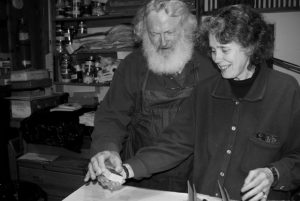
Jan and Crispin Elsted
What surprised you about the Elsteds? What do people misunderstand about them?
People thought they were quirky people who live in the woods. That’s not the story. It’s the way they base their lives, to create beauty; if you live in a consumer world there is no reason to do it and it doesn’t make sense. But for them it is their joy and life’s work. They are married in life and work.
Was this a personal journey for you as well?
This story is about value systems and seeing and living in 3D instead of 2D like most of us do nowadays, working in front of a computer screen. That is not their value system. Their value system is based on bringing joy and creating a world for people to go into. It’s not how much money they can make, they are not operating in our value structure. They are operating very consciously.
I was questioning my own value system and why do I accept all these things. You get something different in letterpress form. What have we lost? To have information come so fast on a phone. Being with the Elsteds made me conscious that what I see is 2D. For most of the day many of us only use our one sense and we don’t use our sense of touch, smell etc…. They use all the senses when they are making books. The feel and smell of the ink, leather and paper. We live in a world where we use one. This was kind of a revelation for me. I was like “huh, I didn’t know I was doing that!” Seeing them work with their hands and every sense simultaneously had me think about the bigger questions in life, like how to live an authentic life?
What was your experience with InFocus Film?
I took the Documentary Film Making program last year. I am a photographer and I wanted to add to my skill-set. It was great program and I had an amazing mentor Julia Ivanova, an award-winning Vancouver documentary filmmaker. Without her this would have never happened, she went far beyond just being an instructor.
What was the most challenging aspect of making a short documentary?
There was a lot going on. Some things are similar with still photography, like putting people at ease, setting up a shot etc.. (and) I did everything myself, lighting, script writing, sound and editing. With the exception of Julia helping.
What was it like getting into the Hot Docs Festival in Toronto?
I am very happy and excited! Financially it’s tough though, especially entering film festivals it can get expensive with the fees and film formatting. Funding is always a problem for filmmakers and that can be restrictive. If my project was team driven it might have been easier, but I chose to do this on my own.
What did you learn about filmmaking during this process?
It’s like putting together a puzzle. I started making this movie because “these are interesting people” but you learn something about yourself through the relationship with the people you are documenting. With documentary filmmaking you have to be a good listener. I concentrated on the story as opposed to some filmmakers (who) focus on technical aspects. As a photographer when I see a bad image I throw it out. In filmmaking it’s not like that. The imperfections, it added to the story…mistakes can benefit the story.
Jan and Crispin Elsted are Barbarian Press. They have produced stationery and cards, and fine press work, including forty books. They’ve published classic authors—William Shakespeare, Edmund Spenser, John Keats—and contemporary ones, such as Theresa Kishkan and Tim Bowling. The newest project by Barbarian Press is called: Bordering on the Sublime: Ornamental Typography at the Curwen Press. Find out more here.


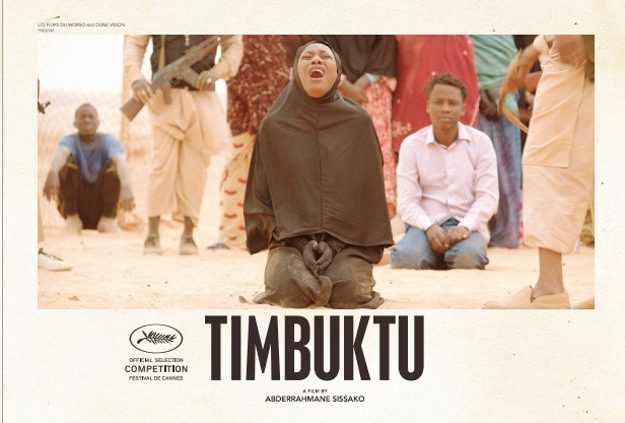
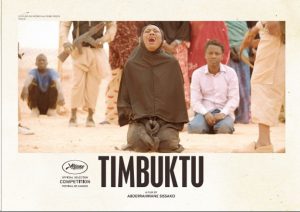 Timbuktu, is a film that draws us into a world and a place that has been both romanticized and vilified by the West. An Oscar nominee this year for best foreign language film, director Abderrahmane Sissako, sets his film in the ancient Malian city of Timbuktu that in 2012 was seized by an al-Qaida group whose regime of terror outlawed music, dancing, laughter and soccer. Central to this story is a cattle herder and his family who live peacefully in the dunes outside of the city despite the chaos brought by the regime. However their lives are soon abruptly changed.
Timbuktu, is a film that draws us into a world and a place that has been both romanticized and vilified by the West. An Oscar nominee this year for best foreign language film, director Abderrahmane Sissako, sets his film in the ancient Malian city of Timbuktu that in 2012 was seized by an al-Qaida group whose regime of terror outlawed music, dancing, laughter and soccer. Central to this story is a cattle herder and his family who live peacefully in the dunes outside of the city despite the chaos brought by the regime. However their lives are soon abruptly changed.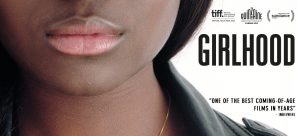 Inspired by the real life world of teenage girls she would see hanging out in Paris shopping malls and train stations, director Celine Sciamma was compelled to dig deeper and find out more about their lives. Girlhood is an authentic, lyrical and gritty coming of age story of a young black girl growing up in the rough suburbs of Paris. With a dynamite soundtrack that uses the Rihanna song “Shines like a Diamond” as a thread throughout the movie, Girlhood is full of life with an almost exclusively female cast, giving this film an honest agency.
Inspired by the real life world of teenage girls she would see hanging out in Paris shopping malls and train stations, director Celine Sciamma was compelled to dig deeper and find out more about their lives. Girlhood is an authentic, lyrical and gritty coming of age story of a young black girl growing up in the rough suburbs of Paris. With a dynamite soundtrack that uses the Rihanna song “Shines like a Diamond” as a thread throughout the movie, Girlhood is full of life with an almost exclusively female cast, giving this film an honest agency.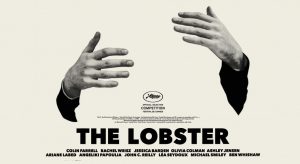 Yorgos Lanthimos (
Yorgos Lanthimos (

